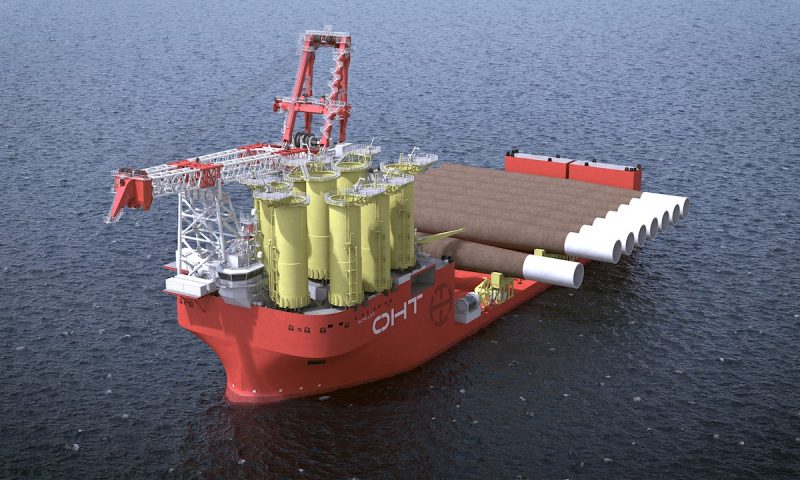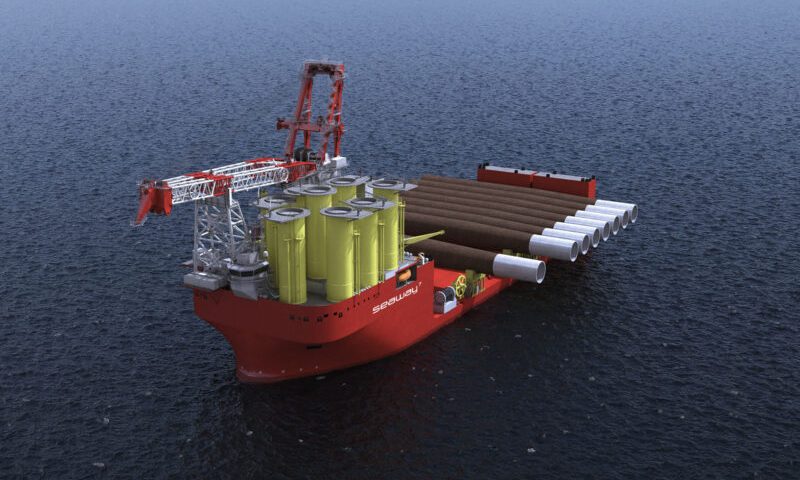
ABB OCTOPUS Software for Vessels Servicing the Offshore Wind Sector
Deep waters and rough seas challenge safe carriage of massive offshore windmill parts to installation sites. Heavy lift vessel owners such as OHT increasingly turn to ABB Ability™ Marine Advisory System – OCTOPUS for decision support that enables safe, efficient operations.
Motion measurement and forecasting plays a critical role in project cargo carriage. Whilst frontrunners in the sector have used the software for years, motion decision support software is now seen by charterers as an essential part of the transport package.
As a result, specialized marine contractors in the sector are increasingly turning to ABB Ability™ Marine Advisory System – OCTOPUS to assist real-time decision-making in voyage planning, execution and related vessel motion optimization.
Real-time decision support
ABB Ability™ Marine Advisory System – OCTOPUS provides a ship master with real-time data on the likely motions to which heavy cargo will be subjected during a planned voyage.
It is available simultaneously to officers aboard ship and cargo personnel ashore. In addition to the decision support during the transportation of heavy cargoes, the OCTOPUS system can also be leveraged during the installation of wind turbines at sea by giving advice to minimize vessel motions and maximum operational window.
Ashore and afloat
Even though project cargo voyages are meticulously planned in advance, rapidly developing weather systems at sea may require quick changes of plan.
“That’s where our masters and shore personnel find OCTOPUS invaluable,” says Bertil Rognes, Head of Project Execution at Norway’s OHT, a five-ship heavy lift project cargo carrier. “The sheer size of tripods, jackets and wind turbines themselves is only one issue.”
“These structures can be subject to extreme accelerations and stresses in a seaway,” adds Rognes. “We believe that ship motion decision support is therefore essential. Our clients share the same opinion since they in several cases will ask for the log of accelerations coming from a transportation which we executed for them, in order to assess the fatigue on transported cargo such as wind jackets or jack-up rigs, For us, this has contributed to installing OCTOPUS on our five ships.”
Rognes expects that growing demand for larger components is likely to cause a shift in the transport and installation of heavy lift components. “In the past, there were cargo transporters and there were installers. Increasingly it’s one company fulfilling both functions. With this in mind, we are expanding our fleet.”
OHT fleet expansion
“Next year, we will be taking delivery of the Alfa Lift, the largest, custom-built offshore wind foundation installation semi-submersible so far. It will have a 3,000-tonne main crane and 10,000 square meters of ‘smart deck’ capable of carrying 16 extra-large monopiles or ten jackets on each voyage.
“We also have two jack-up installation vessels under construction. They will be able to transport wind turbine generators and install them at the site. Motion calculation and control is absolutely essential.”
OHT’s Rognes explains that shore personnel were sold on the OCTOPUS system from the start. However, following a range of familiarization initiatives, its unconditional acceptance by the company’s seagoing personnel is a clear validation.
“Our ships’ masters have been assessing weather, motions and cargo safety throughout their careers,” he explains. “But now they have a real-time decision support system that guarantees additional assurance. Today, they wouldn’t be without it.”













